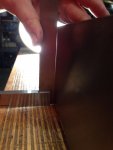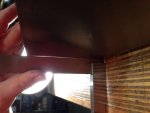Dave Black
Member
- Messages
- 638
- Location
- Central PA
I just got a call back, I was told that if the cupping is less than .008" then it's considered within spec. That's measured from corner to corner. That seems way too much for a fence. Any opinions on that?

 .
.
